- Izu Peninsula top
- General
- Earthquake and volcano
- Too many deer in Izu
- East
- Ito - its old buildings
- Anjin = Wlliam Adams and Ito
- Religious Charisma Nichiren
- Washtub race
- Yokikan - Spa ryokan
- Minami-Kaikisen: Auberge
- Ike and its paddy fields
- Summer has come!!!
- Inatori - fish, spa and more
- Central
- Banjo Waterfall
- Mount Amagi
- Shuzenji - old spa town
- Arabashiri - Bandai-Jozo
- Oomi Land - heart of Izu
- West and south
- Heda on the west coast
- Toi - Gold mine
- Matsuzaki - namako wall
- Izu-no-Chohachi - Plasterer
- Kumomi on the west coast
- Shimoda - Tojin-Okichi
- Cottage life
- Fishing in Usami
- Start of my fishing life
- Training camp in Amagi
- Cottage life / music&drinks
- Party in Izu - part 2
- Party in Izu - part 1
- Sunday morning concert
- Ice and snow in Amagi
- My summer house
- Restaurant and eatery
- Let’s eat Izu-Deer!
- Isui-an - exquisite soba
- Sugizen - big prawn fry
- Sayang - Bali restaurant
- Restaurant Tanaka
Isui-an
Futo 911-103, Ito City, 413-0231 Shizuoka PrefectureTel: 0557-51-5188
Open from 11:30 to 15:00, 17:00 to 19:30
Duesdays and second and forth Wednesdays closed
Isui-an - an exquisite soba restaurant in Izu
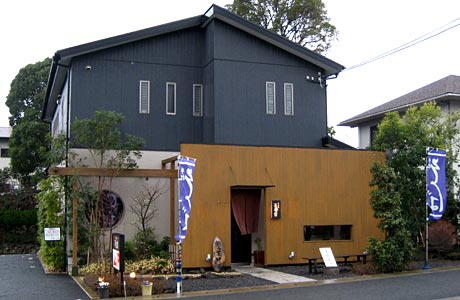
The fassade of Isui-an - a modern Japanese design house
Recently I discovered an excellent soba restauran Issui-an in Ito. The owner had learned necessary skill and know how for soba making and running a soba restaurant at the Issa-an school for soba professionals.Generally speaking, there are no schools for learning traditional handicraft or art including the art of cooking. Therefore cooks of Japanese cuisine train themselves with professional cooks as apprentices. This practice is combined with noren-wake in Japan.
Many Soba restaurants have common names such as Sunaba and Yabu, though they are not franchised or chain restaurants. This phenomenon resulted from noren-wake. It was and is still practiced for Japanese restaurants to allow their employees or apprentices to use the same restaurant name when they became independent and opened their own restaurants. Noren is a sort of curtain hanging in the entrance of restaurants to cut sunshine and other disturbances from outside as well as to show the restaurant name.
We therefore expect similar taste of foods in restaurants with the same name. Among three major names for soba restaurants, the founder of Sunaba came from Osaka in the mid 18th century and Toranomon-Sunaba is one of the representative Sunaba soba restaurants. They use somewhat sweet sauce for soba. The first Yabu, on the other hand, opened in the 1880s in Ueno and a few famous Yabu soba restaurants are distinct in their very salty sauce and little amount of a portion. The original Sarashina came from the present Nagano-prefecture and later it was appointed by shogun as a soba provider and invented special high-quality white colored soba. Apart from these three famous groups the names such as Chojuan and Maruka are numerous in Tokyo.
On the other hand, soba cooks who have learned at Issa-an and its soba school for professionals do not usually name their restaurants Issa-an, although Iss-an style soba possesses considerable influence in the recent soba world. I understand that this is symbolic for the modernity of their system "school" instead of learning soba technique as apprentices.
There are four tables ...
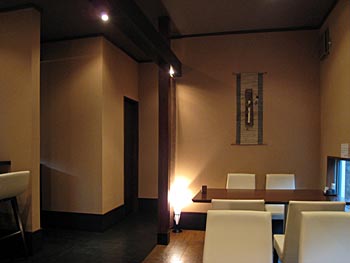
and a counter with 5 chairs.
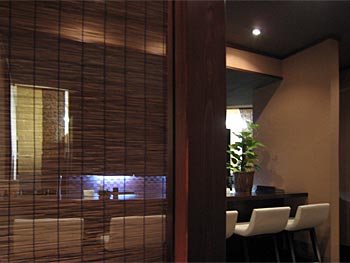
The interior of Isui-an is simple and modern, but with a good sense of tradition.

and a counter with 5 chairs.

The interior of Isui-an is simple and modern, but with a good sense of tradition.
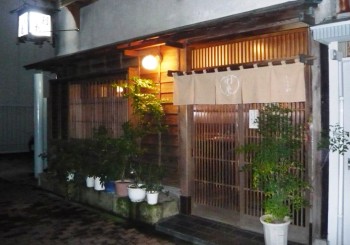
Toshian at night
I wrote maybe to long about Issa-an. However, the taste of Issa-an style soba was really revolutionary. The first experience of Issa-an style soba in Toshi-an in Shirogane opened me a new world of soba taste. Especially I love the texture of their soba noodle, hard but elastic texture, which is very different from traditional types of soba, which was coarse but fragile in their structure. Cooks who have learned at Issa-an soba school work in many places and they develop soba according to their personal taste though there is a common factor among all Issa-an style soba noodles.
The noodle of Issui-an was without doubt one of the most successful examples of Issa-an style soba. Not far from Jogasaki rail way station, the restaurant is said to be usually filled up with guests. But, when I went there, maybe due to chilly and rainy weather, I was the only guest. I ordered a bigger portion of cold soba with tempura. Soba noodle was in opaque color and elastic and had natural buckwheat flavor. In other words, simple and fresh. Sauce was fragrant after dried bonito and smart. Tempra was crispy and light. Utensils were carefully selected and together with the interior created quiet, warm and moderately modern environment which amplified the pleasure of soba eating.
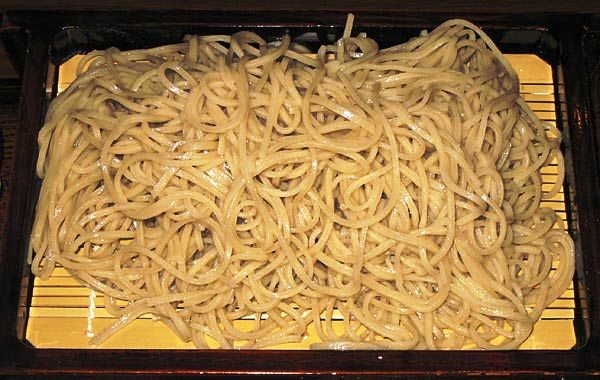
I believe that the average taste of soba has changed in Japan after Issa-an became popular. Even non-Issa-an group soba restaurants are influenced by the taste of Issa-an soba. The improvement of Toranomon Sunaba is, I believe, in this direction. Also the soba of Mugiya tastes strongly after Issa-an style. I once asked Yui-san, whether her soba might be in issa-an style. She answered that her soba was not hand made but machine made, however that her cooks loved Issa-an soba and tryied to imitate its taste. The result is quite acceptable.